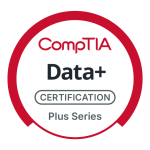-
To ensure you get the most out of your CIN membership and stay connected with the latest updates, we are asking all members to update their community profiles. Please take a few moments to log in and: • Complete all sections of your profile • Review your current information for accuracy • Enter an alternative email address if desired (CIN requires your valid business email address for your training organization). Keeping your profile up to date helps us better serve you, ensures your account is correctly linked with CompTIA’s CRM, streamlines processes, enhances communication, and guarantees you never miss out on valuable CIN opportunities. Thank you for taking this important step! step!
You are using an out of date browser. It may not display this or other websites correctly.
You should upgrade or use an alternative browser.
You should upgrade or use an alternative browser.
Latest activity
Filters
Show only:
Passed Network+!
- CompTIA Network+
- 15 Replies
You need to focus more on Testout perform, there is a lot of simulation questions for each module. Good luckDo you have any materials you used to study for the pbqs? I keep struggling to get them all and would like to study a bit more to succeed. I reviewed the questions to death and half but I need more experience with the simulations to succeed.
Passed the CompTIA A+ 220-1201 (Core 1) and 220-1202 (Core 2)
- Certifications
- 15 Replies
Good job, Congratulations Mr. Victor Chidi, Thats a swift brave move, I LOVE THAT......
On-demand
- CompTIA Linux+
- 11 Replies
Rick,
Thanks for placing the links in chat. I had missed session 1 as I didn't get a chance to register until session 2.
Looking for a CompTIA Volunteer/Mentor
- Job Board
- 2 Replies
Paul,
I used to work in NOVA (Reston, Fairfax, Manassas, etc.) Where in NOVA would this be located? Must the CompTIA certified instructor be onsite, remote or Hybrid?
I used to work in NOVA (Reston, Fairfax, Manassas, etc.) Where in NOVA would this be located? Must the CompTIA certified instructor be onsite, remote or Hybrid?
-
Question
Looking for a CompTIA Volunteer/Mentor
Hello CompTIA Community,
My name is Paul Pearson the president of a non profit in Northern VA called Eduruna that is dedicated using students and technology to strengthen communities. We create exciting ways to help students succeed in school and prepare for the future.
We are currently seeking a CompTIA certified instructor to volunteer as a mentor and advisor to our board. This is a fantastic opportunity to share your expertise, inspire students, and help guide our organization’s mission. All mentoring is done online through our discord server.
If you’re interested or would like more information, please reach out to me at [email protected]
My name is Paul Pearson the president of a non profit in Northern VA called Eduruna that is dedicated using students and technology to strengthen communities. We create exciting ways to help students succeed in school and prepare for the future.
We are currently seeking a CompTIA certified instructor to volunteer as a mentor and advisor to our board. This is a fantastic opportunity to share your expertise, inspire students, and help guide our organization’s mission. All mentoring is done online through our discord server.
If you’re interested or would like more information, please reach out to me at [email protected]
Did not receive my A+ voucher from the TTT.
- CompTIA A+
- 11 Replies
I did not got any voucher regarding CompTIA A+ ,I completed both A+ TTT, I hoped that @Stephen Schneiter can help us .
Passed the CompTIA A+ 220-1201 (Core 1) and 220-1202 (Core 2)
- By jasoneckert
- Certifications
- 15 Replies
Congrats!
Instead of leaving the TTT voucher to the last minute as I've done in the past, I'm actually writing the 220-1201 exam this afternoon
Instead of leaving the TTT voucher to the last minute as I've done in the past, I'm actually writing the 220-1201 exam this afternoon
CIN TTT Series: Data+ V2
- By Ziad Sobri
- CompTIA Webinars
- 30 Replies
Registered. Thank you @Stephen Schneiter
Passed Network+!
- By irridianstar
- CompTIA Network+
- 15 Replies
Do you have any materials you used to study for the pbqs? I keep struggling to get them all and would like to study a bit more to succeed. I reviewed the questions to death and half but I need more experience with the simulations to succeed.
CIN TTT Series: Data+ V2
- CompTIA Webinars
- 30 Replies
Our next TTT series will focus on the CompTIA Data+ V2 certification. Join CIN and special guest @Kwabena Fred as he Leads the Data+ TTT series. Fred will cover the exam objectives and provide hands on examples as you strengthen your Data Analytics skills. We will discuss how to cover the content with students and suggest various labs to let students gain hands-on experience as they prepare for certification.
The CompTIA Data+ certification exam covers the following domains.
When: October 28 - December 4, 2025 (Ten sessions), 1:00 - 3:00 PM CDT
Who: Frederick Anaafi
Where: ON24
Register Now


The CompTIA Data+ certification exam covers the following domains.
- Explain data concepts: Database types, data structures, file extensions, and data types.
- Identify data sources: Databases, APIs, website data, files, logs and repositories.
- Recognize infrastructure concepts: Cloud, on-premise, storage, and containerization.
- Identify data tools: Coding environments, BI software, and analysis platforms.
- Understand AI concepts: Identify AI models, natural language processing, and robotic automation.
When: October 28 - December 4, 2025 (Ten sessions), 1:00 - 3:00 PM CDT
Who: Frederick Anaafi
Where: ON24
Register Now


Attachments
Passed the CompTIA A+ 220-1201 (Core 1) and 220-1202 (Core 2)
- Certifications
- 15 Replies
Guys, you talk about TTT Vouchers. But if he has Voucher from Non TTT Events, they might be transferable.(like payed by him in Advanced.)
Yeah, but usually we talk here about TTT Vouchers. IF they are shared or sold (happend in the Past), Stephen has a lot of Trouble, and the CIN Member might be banned from recieving TTT Vouchers again. CompTIA and VUE can Track the Name <-> VoucherCode assigned from the TTT.
Yeah, but usually we talk here about TTT Vouchers. IF they are shared or sold (happend in the Past), Stephen has a lot of Trouble, and the CIN Member might be banned from recieving TTT Vouchers again. CompTIA and VUE can Track the Name <-> VoucherCode assigned from the TTT.
October is Cybersecurity Awareness Month!
- By victorofoms
- CompTIA Security+
- 2 Replies
Timely info, folk. Thanks for sharing. Will there be any other event within the month to catch up with live? I'll watch this on demand anyways.Please be aware that October is Cybersecurity Awareness month. There are many different cybersecurity organizations that recognize and offer additional educational resources around this designation. One such are the folks at StaySafeOnline:
https://www.staysafeonline.org/cybersecurity-awareness-month
They offered an online event on October 1, 2025. You can watch the recording at the link above. Their messaging for this year is that small actions can make a big difference. They have focusing on the Core 4. Four easy steps anyone can take to boost their online safety:
As instructors I encourage everyone to help spread messaging about the 'Core 4' and talk about how students can use these and more advanced techniques as well as how they can spread the word about improving cybersecurity.
- Use strong passwords and a password manager
- Turn on multifactor authentication
- Recognize and report scams
- Update your software
Events Page?
- By Jen Z
- CIN Road Show
- 0 Replies
Hi All - Does anyone have the link for the Events page on the new website? I'm looking for the details on the partner meeting in London on Nov 11. Tnx.
Theory vs. Labs: Which One Do You Never Skip?
- By Rick Butler
- CIN Open Forums
- 18 Replies
One of the things I've always appreciated about CompTIA's method is the layered approach for certs. A candidate might start with Tech+, before going to A+, to Net+, Sec+ and so on.
<soapbox>
The problem I have always observed with students is patience. Students don't want to have to, as @jasoneckert pointed out in the last TTT session for Linux+, invest the "sweat equity" in order to gain the skills. In my experience, this is so true because many of these exams and the associated skills require time. Time to learn the theory; time to learn the skills, processes, - the how and why things are done. They either want the quick-and-easy path to acquiring a certification, or they just don't truly have the aspiration to achieve.
As @BrianFord pointed out, we can dump tons of knowledge onto them, but if they aren't willing to put in the time - real time, to learn, then no amount of teaching by any instructor, no matter how good he/she is, will meet the goal.
I personally have little grace for students who opt to cut corners or even cheat their way to a cert, just because they are impatient or lazy. I remember all the hours that I've had to personally put in to get to where I am - and many of the 'old-salts' here in the forum can say the same thing. The late nights, studying until bleary eyed and unable to keep my eyes open, the sacrifices made, all of that. In my 35 years of doing IT, I don't regret the hours of learning, but I do become irate at students who don't want to put in the time and effort.
Students who are genuine and want to learn will put in the time and will appreciate the journey, no matter how arduous. The ones that are there for a piece of paper, well, not really worth my time.
</soapbox>
<soapbox>
The problem I have always observed with students is patience. Students don't want to have to, as @jasoneckert pointed out in the last TTT session for Linux+, invest the "sweat equity" in order to gain the skills. In my experience, this is so true because many of these exams and the associated skills require time. Time to learn the theory; time to learn the skills, processes, - the how and why things are done. They either want the quick-and-easy path to acquiring a certification, or they just don't truly have the aspiration to achieve.
As @BrianFord pointed out, we can dump tons of knowledge onto them, but if they aren't willing to put in the time - real time, to learn, then no amount of teaching by any instructor, no matter how good he/she is, will meet the goal.
I personally have little grace for students who opt to cut corners or even cheat their way to a cert, just because they are impatient or lazy. I remember all the hours that I've had to personally put in to get to where I am - and many of the 'old-salts' here in the forum can say the same thing. The late nights, studying until bleary eyed and unable to keep my eyes open, the sacrifices made, all of that. In my 35 years of doing IT, I don't regret the hours of learning, but I do become irate at students who don't want to put in the time and effort.
Students who are genuine and want to learn will put in the time and will appreciate the journey, no matter how arduous. The ones that are there for a piece of paper, well, not really worth my time.
</soapbox>
CompTIA A+ 220-1201 (Core 1) and 220-1202 (Core 2) Exam Prep
- CompTIA A+
- 15 Replies
Praying for that.Hope you get the voucher soon so you can wrap it up
Did you get yours,
Load more

